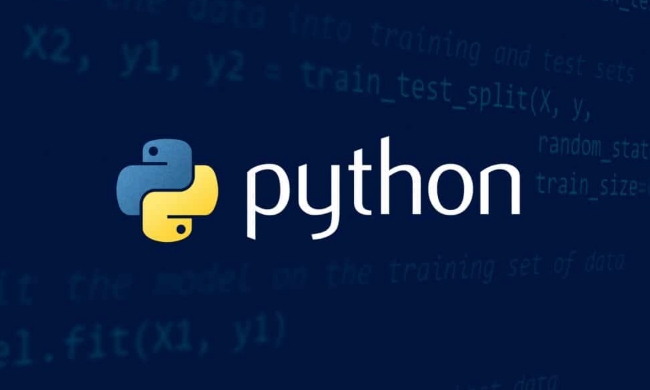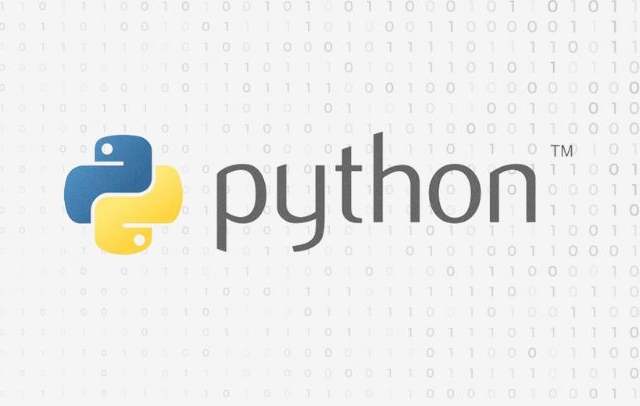Working with Python context managers (with statement)
Jul 15, 2025 am 01:41 AMThe context manager is a mechanism in Python that simplifies resource management and ensures the correct release of resources, and is implemented through with statements. The core is to define the operations before and after the code is executed, and to automatically execute the two stages of "enter" and "exit", such as automatically closing the file or releasing the lock. The implementation methods include: 1. Use the class to define the __enter__() and __exit__() methods; 2. Use the @contextmanager decorator of the contextlib module to separate the entry and exit logic through yield. It has a wide range of application scenarios, such as file operation, database connection, locking mechanism, temporary directory management and performance timing, which can effectively improve code readability and security.

Using Python's with statements to process context managers is actually to make resource management safer and code clearer. The key behind it lies in the automatic control of the two stages of "entry" and "exit", such as automatically closing after opening a file, or automatically releasing after locking.

What is a context manager?
Simply put, a context manager is an object that defines what to do before and after a piece of code is executed. The most common example is to open a file with open(...) as f: There is no need to call f.close() manually, Python will automatically close it for you when with block ends.
Implementationally, a context manager needs to support two methods:

-
__enter__(): Execute when enteringwithblock, the return value is usually assigned to the variable afteras. -
__exit__(): is automatically called at the end ofwithblock and will be executed regardless of whether an exception occurs.
These two methods allow you to do some cleaning work, such as closing connections, freeing resources, etc.
How to customize a context manager?
You can create your own context manager via classes or decorators.

Method 1: Implement with classes
class MyContext:
def __enter__(self):
print("Get into context")
Return self
def __exit__(self, exc_type, exc_val, exc_tb):
print("Exit context")
# Return True to suppress exceptions. Return True
with MyContext() as mc:
print("Execution")This method is suitable for situations where the structure is relatively fixed and multiple methods are required to cooperate.
Method 2: Use contextlib decorator
If you don't want to write classes, you can use the @contextmanager decorator provided by the standard library contextlib :
from contextlib import contextmanager
@contextmanager
def my_context():
print("enter")
try:
yield
Finally:
print("Exit")
with my_context():
print("Execute") The core here is yield , the upper part is equivalent to __enter__() , and the lower part is equivalent to __exit__() .
What can a context manager be used for?
In addition to file operations, context managers are useful in many places:
- Database connection management : Connect to the database when entering, and automatically disconnect or commit transactions when exiting.
- Lock mechanism : acquire the lock when entering and release the lock when exiting to avoid deadlock.
- Temporary directory/file management : Create a temporary directory when entering and automatically clean up when exiting.
- Performance timing : Record the entry time, and output time is taken when exiting.
To give a simple example, you want to count the time a piece of code runs:
import time
from contextlib import contextmanager
@contextmanager
def timer():
start = time.time()
yield
end = time.time()
print(f"Time-consuming: {end - start:.2f} seconds")
with timer():
time.sleep(1)This way you don't need to manually write the start and end times each time.
Basically that's it. Making good use of context managers can make resource management and exception handling concise and reliable. The key is to understand what to do in the entry and exit stages, and how to encapsulate logic in combination with actual scenarios.
The above is the detailed content of Working with Python context managers (with statement). For more information, please follow other related articles on the PHP Chinese website!

Hot AI Tools

Undress AI Tool
Undress images for free

Undresser.AI Undress
AI-powered app for creating realistic nude photos

AI Clothes Remover
Online AI tool for removing clothes from photos.

Clothoff.io
AI clothes remover

Video Face Swap
Swap faces in any video effortlessly with our completely free AI face swap tool!

Hot Article

Hot Tools

Notepad++7.3.1
Easy-to-use and free code editor

SublimeText3 Chinese version
Chinese version, very easy to use

Zend Studio 13.0.1
Powerful PHP integrated development environment

Dreamweaver CS6
Visual web development tools

SublimeText3 Mac version
God-level code editing software (SublimeText3)

Hot Topics
 How to handle API authentication in Python
Jul 13, 2025 am 02:22 AM
How to handle API authentication in Python
Jul 13, 2025 am 02:22 AM
The key to dealing with API authentication is to understand and use the authentication method correctly. 1. APIKey is the simplest authentication method, usually placed in the request header or URL parameters; 2. BasicAuth uses username and password for Base64 encoding transmission, which is suitable for internal systems; 3. OAuth2 needs to obtain the token first through client_id and client_secret, and then bring the BearerToken in the request header; 4. In order to deal with the token expiration, the token management class can be encapsulated and automatically refreshed the token; in short, selecting the appropriate method according to the document and safely storing the key information is the key.
 How to test an API with Python
Jul 12, 2025 am 02:47 AM
How to test an API with Python
Jul 12, 2025 am 02:47 AM
To test the API, you need to use Python's Requests library. The steps are to install the library, send requests, verify responses, set timeouts and retry. First, install the library through pipinstallrequests; then use requests.get() or requests.post() and other methods to send GET or POST requests; then check response.status_code and response.json() to ensure that the return result is in compliance with expectations; finally, add timeout parameters to set the timeout time, and combine the retrying library to achieve automatic retry to enhance stability.
 Python variable scope in functions
Jul 12, 2025 am 02:49 AM
Python variable scope in functions
Jul 12, 2025 am 02:49 AM
In Python, variables defined inside a function are local variables and are only valid within the function; externally defined are global variables that can be read anywhere. 1. Local variables are destroyed as the function is executed; 2. The function can access global variables but cannot be modified directly, so the global keyword is required; 3. If you want to modify outer function variables in nested functions, you need to use the nonlocal keyword; 4. Variables with the same name do not affect each other in different scopes; 5. Global must be declared when modifying global variables, otherwise UnboundLocalError error will be raised. Understanding these rules helps avoid bugs and write more reliable functions.
 Python FastAPI tutorial
Jul 12, 2025 am 02:42 AM
Python FastAPI tutorial
Jul 12, 2025 am 02:42 AM
To create modern and efficient APIs using Python, FastAPI is recommended; it is based on standard Python type prompts and can automatically generate documents, with excellent performance. After installing FastAPI and ASGI server uvicorn, you can write interface code. By defining routes, writing processing functions, and returning data, APIs can be quickly built. FastAPI supports a variety of HTTP methods and provides automatically generated SwaggerUI and ReDoc documentation systems. URL parameters can be captured through path definition, while query parameters can be implemented by setting default values ??for function parameters. The rational use of Pydantic models can help improve development efficiency and accuracy.
 How to parse large JSON files in Python?
Jul 13, 2025 am 01:46 AM
How to parse large JSON files in Python?
Jul 13, 2025 am 01:46 AM
How to efficiently handle large JSON files in Python? 1. Use the ijson library to stream and avoid memory overflow through item-by-item parsing; 2. If it is in JSONLines format, you can read it line by line and process it with json.loads(); 3. Or split the large file into small pieces and then process it separately. These methods effectively solve the memory limitation problem and are suitable for different scenarios.
 Python for loop over a tuple
Jul 13, 2025 am 02:55 AM
Python for loop over a tuple
Jul 13, 2025 am 02:55 AM
In Python, the method of traversing tuples with for loops includes directly iterating over elements, getting indexes and elements at the same time, and processing nested tuples. 1. Use the for loop directly to access each element in sequence without managing the index; 2. Use enumerate() to get the index and value at the same time. The default index is 0, and the start parameter can also be specified; 3. Nested tuples can be unpacked in the loop, but it is necessary to ensure that the subtuple structure is consistent, otherwise an unpacking error will be raised; in addition, the tuple is immutable and the content cannot be modified in the loop. Unwanted values can be ignored by \_. It is recommended to check whether the tuple is empty before traversing to avoid errors.
 What are python default arguments and their potential issues?
Jul 12, 2025 am 02:39 AM
What are python default arguments and their potential issues?
Jul 12, 2025 am 02:39 AM
Python default parameters are evaluated and fixed values ??when the function is defined, which can cause unexpected problems. Using variable objects such as lists as default parameters will retain modifications, and it is recommended to use None instead; the default parameter scope is the environment variable when defined, and subsequent variable changes will not affect their value; avoid relying on default parameters to save state, and class encapsulation state should be used to ensure function consistency.
 What is a pure function in Python
Jul 14, 2025 am 12:18 AM
What is a pure function in Python
Jul 14, 2025 am 12:18 AM
Pure functions in Python refer to functions that always return the same output with no side effects given the same input. Its characteristics include: 1. Determinism, that is, the same input always produces the same output; 2. No side effects, that is, no external variables, no input data, and no interaction with the outside world. For example, defadd(a,b):returna b is a pure function because no matter how many times add(2,3) is called, it always returns 5 without changing other content in the program. In contrast, functions that modify global variables or change input parameters are non-pure functions. The advantages of pure functions are: easier to test, more suitable for concurrent execution, cache results to improve performance, and can be well matched with functional programming tools such as map() and filter().






